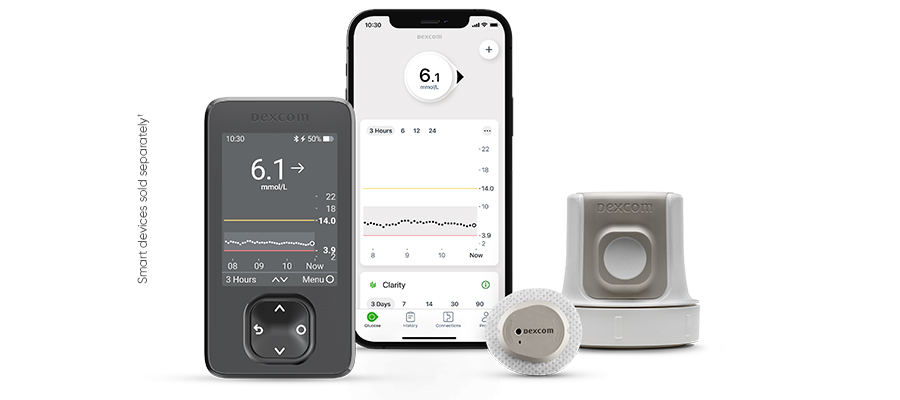
Introducing the Dexcom G7 real-time CGM System
Our simplest, most powerful real-time continuous glucose monitor (rt-CGM) yet.
The Dexcom G7 low-profile, all-in-one sensor with less than 30 min warm up, faster than any other CGM on the market,‡ sending real-time glucose readings automatically to a compatible smart device† or receiver.
No finger pricks*, no scanning.
Dexcom G7 is designed for people with type 1 diabetes, aged 2 and older, who need extra support, enabling them to take control of their diabetes and giving them freedom to live their lives in the way they choose.
Dexcom G7. Made for More.
*If your glucose alerts and readings from Dexcom G7 do not match symptoms or expectations, use a blood glucose meter to make diabetes treatment decisions.
Why Dexcom G7?
Dexcom G7 can help empower your patients with proven accuracy1 and the new G7 app† shows glucose levels and where they’re heading, helping people with diabetes make informed decisions. Spending more time in range and lowering HbA1C is easier than ever before.2-3
Zero finger pricks* or scanning
Proven accuracy1 for diabetes management, with no finger pricks,* scanning or calibration required.
*If glucose alerts and readings from Dexcom G7 do not match a user’s symptoms or expectations, they should use a blood glucose monitor to make diabetes treatment decisions.
Customisable alert schedules
Customisable high and low glucose alerts offer people with diabetes the ability to set alert schedules and repeat alert functionality for discretion and flexibility.
Continuous Share||
Users can share their data with up to 10 people using the Dexcom Follow app.|| Widening the support network, this feature can support greater peace of mind, particularly in parents and caregivers.
Faster than any other CGM‡
Dexcom G7 has an up to 30-minute warm up, twice as fast as any other CGM.‡ It also offers a 12-hour grace period, so users can change sensor when it’s convenient for them.
Urgent Low Soon Alert
The “Urgent Low Soon” Alert can warn users in advance of a potential serious hypoglycaemic event (≤ 3.1 mmol/L) within 20 minutes and is associated with reduced hypoglycaemia, without a corresponding increase in hyperglycaemia.4
Delay 1st Alert
This unique feature allows users to delay the first high alert for a set time, between 15 minutes and up to 4 hours, making the alert more relevant and is designed to avoid alert fatigue.
Interoperability
Full connectivity for the Dexcom G7 CGM System is coming soon.
We are working very closely with our partners to develop the integration of the G7 CGM into their insulin delivery systems (launch timings may vary). In the meantime, people with diabetes will continue to have access to Dexcom G6 CGM data that is integrated into multiple pump partner systems to manage their condition more effectively and conveniently.§
Dexcom G7 Components
Using the auto-applicator, users or caregivers can insert the all-in-one sensor and transmitter. Then, they will be able to view glucose data from the transmitter via their chosen display device.
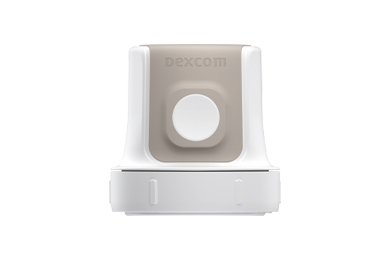
Auto-Applicator
Simplifies the sensor insertion process with a push of a button.
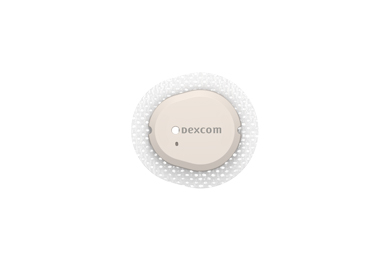
All-in-one Sensor and transmitter
60% smaller than previous Dexcom sensors, the all-in-one sensor and transmitter monitors interstitial glucose levels through a small wire inserted just underneath the skin, sending data to the user’s display device.† Discreet and waterproof, it also offers the flexibility of three different wear locations.¶ The Dexcom G7 sensor may be worn for up to 10 days.
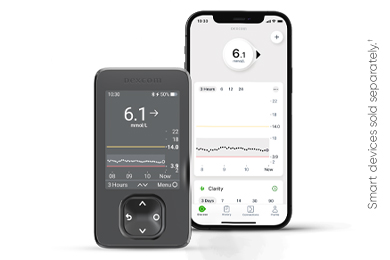
Display Device
Users can view their glucose readings and trend data on the all new, easy-to-use Dexcom G7 receiver or a compatible smart device.†
Dexcom G7 now connects directly to Apple Watch†
Dexcom G7 is the only CGM system that connects directly to Apple Watch,† giving users the freedom and convenience of real-time glucose readings on their wrist without having to always carry their smartphone.#
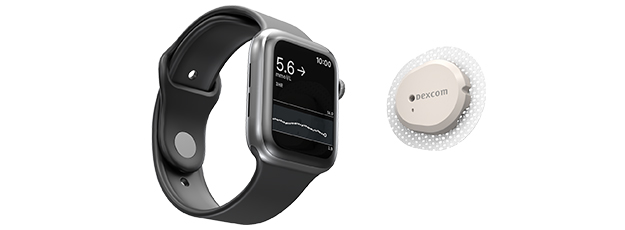
How to identify people with diabetes who may benefit from Dexcom G7
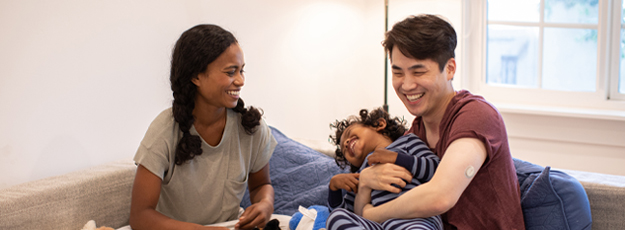
Dexcom G7 is suitable for anyone with diabetes over the age of 2 years. It can be worn by people who use a pump and by those on multiple daily injections.
Updated NICE guidance5-7 now recommends real-time CGM for people with T1D and T2D, read more about the guidance here.
Dexcom G7 real-time CGM System is best suited to people with T1 diabetes who may need extra support, such as
- people who suffer frequent hypoglycaemia; have a complete loss of awareness or extreme fear of hypoglycaemia; or who suffer persistent hyperglycaemia despite frequent testing
- pregnant women
- children and young people
To find out more information on how to access Dexcom G7 for people with diabetes being treated at your practice, speak to a Dexcom Representative.
† Smart device sold separately. For a list of compatible smart devices, please visit www.dexcom.com/compatibility.
‡ The Dexcom G7 can complete the warmup within 30 minutes, whereas other CGM brands require up to an hour or longer.
§ Separate Dexcom Follow app required. Internet connectivity required for data sharing.
|| Compatible insulin-delivery device sold separately.
¶ The Dexcom G7 is approved for wear on the arm and abdomen, and ages 2-6 can also wear Dexcom G7 on the upper buttocks.
# Compatible smartphone is required to pair a new Dexcom G7 sensor with an Apple Watch. Dexcom G7 users must continuously have their smartphone within 20 feet / 6 meters to utilize the Share/Follow features. Apple Watch is not capable of Share/Follow.
1 Dexcom G7 CGM System User Guide, 2022.
2 Beck RW, et al. JAMA. 2017;317(4):371-378.
3 Welsh JB, et al. J Diabetes Sci Technol. 2024;18(1):143-147.
4 Puhr S, et al. Diabetes Technol Ther. 2019;21(4):155-158.
5 Type 1 diabetes in adults: diagnosis and management NICE guideline [NG17].
6 Type 2 diabetes in adults: management NICE guideline [NG28]